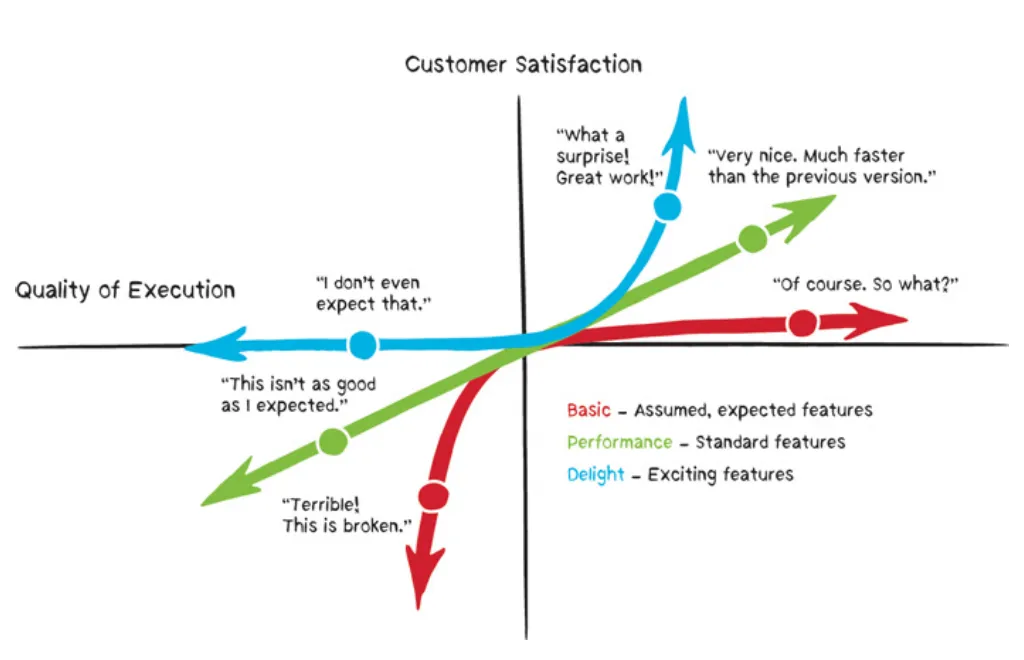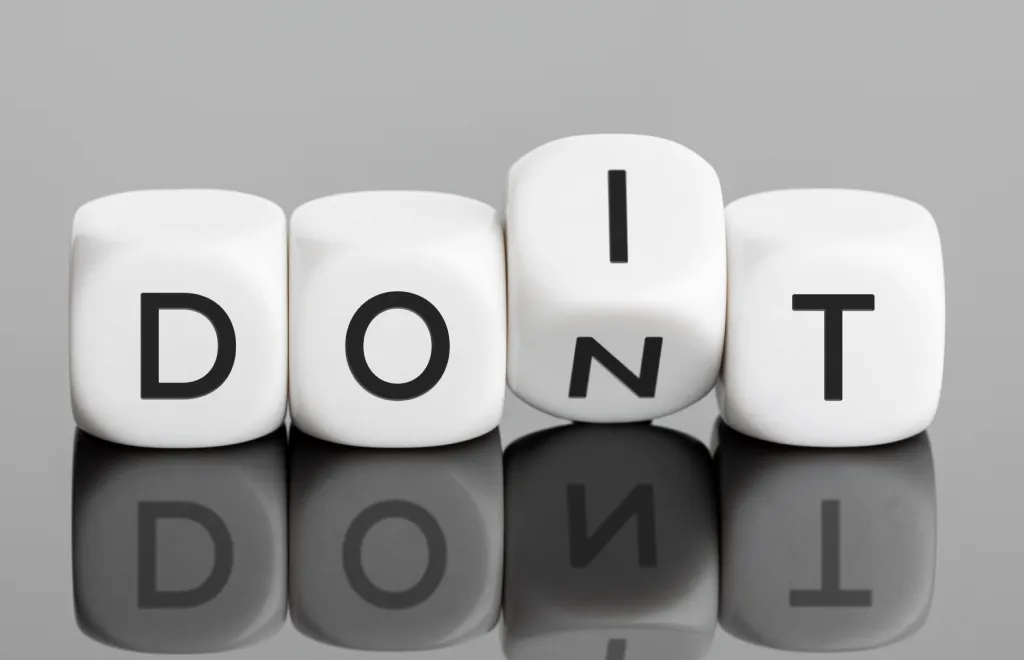Kano-modellen forklart
Meet the Kano Model, an interesting perspective and approach to the prioritization of customer satisfaction through a series of categories. Created in the 1980’s, it remains important to this day, due to its major contribution to several companies all over the world.

This innovative model can provide crucial insights to the industry to improve a product. With that mindset, designing a journey directly into the customer’s emotions and satisfaction is possible.
Throughout this article, you’ll get to know everything about the Kano model, how to use it, and its benefits.
Finally, we’ll provide you with tips and common mistakes to avoid while using this amazing model.
Who invented the Kano model?
The inventor of this famous model is Noriaki Kano, a Tokyo University of Science professor. He created a model for customer satisfaction in 1978, universally known as the Kano Model.

What’s the Kano Model?
Every day, companies from various industries are creating and contemplating new products for a competitive world.
From the first draft to the final version of the project, there are many steps to take. With so much to do and to pay attention to, it’s very hard to know how to start.
This is where the Kano Analysis comes to life. This model can balance all the elements that are pending in a project to bring out the perfect product for every customer.
In a way, this model exists to help you improve products and services towards its consumers.
Through the Kano Model, you’ll have a deeper understanding of the customer’s emotional response to products. That’s explored through five categories:
- Must-be Quality
- One-dimensional Quality
- Attractive Quality
- Indifferent Quality
- Reverse Quality
In our blog, find why gathering feedback from the market is one of the best ways to increase revenue.
Must-be Quality
Normally, the must-be quality includes what the customers automatically expect from a product and/or a service.
These are requirements that must be included in the price of the product. For example, if you book a room in a hotel, you would assume that there would be hot water.
One-dimensional Quality
The one-dimensional quality it’s the one that makes a difference, and that states when the customer is satisfied or dissatisfied.
For example, imagine if you were browsing for a room to book on your holiday and you chose a simple one. When you check-in, you will find yourself happily surprised that its conditions were better than the pictures.
Attractive Quality
The attractive quality ensures that the customer is very satisfied with the product and/or service in the most unexpected fashion.
For example, imagine you have booked your room abroad, and when you enter the room, you are welcomed with a gift of fresh food.
Indifferent Quality
At the indifferent quality, it doesn’t increase or decrease the client’s satisfaction.
For example, if you work at a hotel and go out of your way to do something you wouldn’t have to do for a client, it won’t impact the customer’s appreciation.
Reverse Quality
The reverse quality originated from a major degree of dissatisfaction by the customer.
For example, if a hotel sets high expectations through empty promises and edited photographs of some spaces of the hotel. When the customer checks in, he’ll see that it looks nothing like he expected. Therefore, he’ll feel extremely dissatisfied.
From these five qualities, there are two main ones to avoid: indifference and reverse quality.
There are three – attractive, one-dimensional, and must-be quality – that are attributed to include as such:
| Threshold Attributes | Performance Attributes | Excitement Attributes |
| Basic features that the customers expect | Elements that are not necessary but increase customer satisfaction | Surprise elements that raise your competitivity through the customer’s delight |
If these three attributes are prioritized in any project, service, or product, it results in a positive association and, ultimately, in the envisioned satisfaction.
If any of these attributes don’t play a part in this journey, you’ll gradually feel dissatisfaction.
Applying the Kano model in the best way
How it was stated above, some categories and attributes help companies to understand their customers and successfully apply the Kano Model. But how to do it in the smartest way possible?
First, you must ensure that you establish what is valued by the customers.
It’s important to discover their tastes, such as what they like and dislike, through surveys and market research. That will give you a clear view of what information you’ve gathered and what you need to do with it.
Kano’s empirical questionnaire template
Noriaki Kano establishes a standardized questionnaire that can measure the participants’ insights.
The goal is to answer two questions for each product feature: One is functional and associated with a positive emotion, and the other is dysfunctional, otherwise associated with a negative emotion. Explore it below:
| I like it | I expect it | I am neutral | I can tolerate it | I dislike it | |
|---|---|---|---|---|---|
| Functional | |||||
| How would you feel if the product had …? | |||||
| How would you feel if there was more of …? | |||||
| Dysfunctional | |||||
| How would you feel if the product did not have …? | |||||
| How would you feel if there was less of …? | |||||
Once you have the combination of the answers for the functional and dysfunctional, you can evaluate it through this chart, which classifies into the categories that were presented in this article:
| Functional | Dysfunctional | Kategori | ||
| I expect it | + | I dislike it | ⇨ | Must-be |
| I like it | + | I dislike it | ⇨ | One-dimensional |
| I like it | + | I am neutral | ⇨ | Attractive |
| I am neutral | + | I am neutral | ⇨ | Indifferent |
| I dislike it | + | I expect it | ⇨ | Reverse |
How to apply the Kano Model survey in 6 steps
- Designate the features of your product/project/service that you want to give your customers;
- Identify each one as Threshold, Performance, or Excitement Attributes;
- If something’s not valuable, make sure you eliminate it from your prioritization;
- It’s crucial that your product has all of the Threshold Attributes (If necessary, eliminate some of the Performance Attributes in favor of the Threshold Attributes);
- Try to include the Excitement Attributes in your project/product;
- Sell the Performance Attributes of your product at a competitive price.
The 6 benefits of Kano Model
If you follow all the steps behind the Kano Model, you’ll be happily surprised by its benefits in your work and its prioritization:
- The Kano Model is a helpful tool that prioritizes the features that will improve the client’s satisfaction;
- Protects your time from being wasted on attributes that won’t function in your customers;
- It exponentially improves the general satisfaction of the clients, which is the goal of the model;
- It’s able to discover important information and value to think of solutions towards the ultimate satisfaction;
- The analysis you receive from the Kano Model can figure out your priorities and issues you need to fix;
- Through the work on the model, you’ll be able to discover different customer segments that could be highly useful to you in your business.
5 Tips to effectively use the Kano Model
Implementing the Kano Model isn’t the easiest task you’ll ever accomplish.
Unfortunately, it has its challenges, but some tips are extremely useful for you to be as successful as you wish to be. Check out these words of advice:
- To have the feedback, you need to improve your product/service, choose the customers that are on the market you want to sell to;
- It’s important to involve your clients in every step of the Kano Model, so they’re able to give their advantageous insights;
- Demonstrate the product/service features through a prototype or an extensive description;
- Make sure to display what each feature does in order to clarify your client;
- Interview your customers, so you have a large sample to analyze.

3 Common mistakes to avoid as a new user of the Kano Model
1. Don’t give up on the first try
The Kano Model is not easy to manage, especially if you’re using it for the very first time. Focus on prioritizing your service/product, and do your best to be resilient towards improving your own work.
2. Don’t be afraid to invest your time
Besides resilience, you need a lot of time to grasp this concept and to gather everything you need to prioritize in this model. Think of your time spent in this experience as a rich investment for developing your service/product.
3. Learn how to interpret quantitative data
One of the things that are a big part of the Kano Model is its quantitative analysis and deep data of the customers. Give yourself a chance to explore all the amazing elements and conclusions that this gathered data can give you.
Konklusjon
To sum up, if you know what you have to do to make your customers happy, it’s easier to manage and prioritize your workload.
Doing this will make it easier to achieve your goals and increase your productivity.
Du er kanskje interessert i: